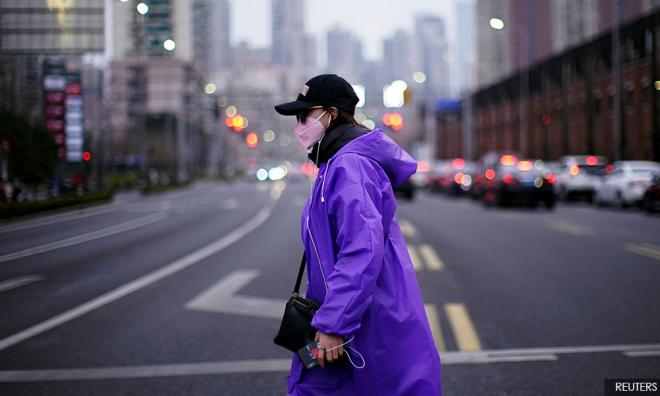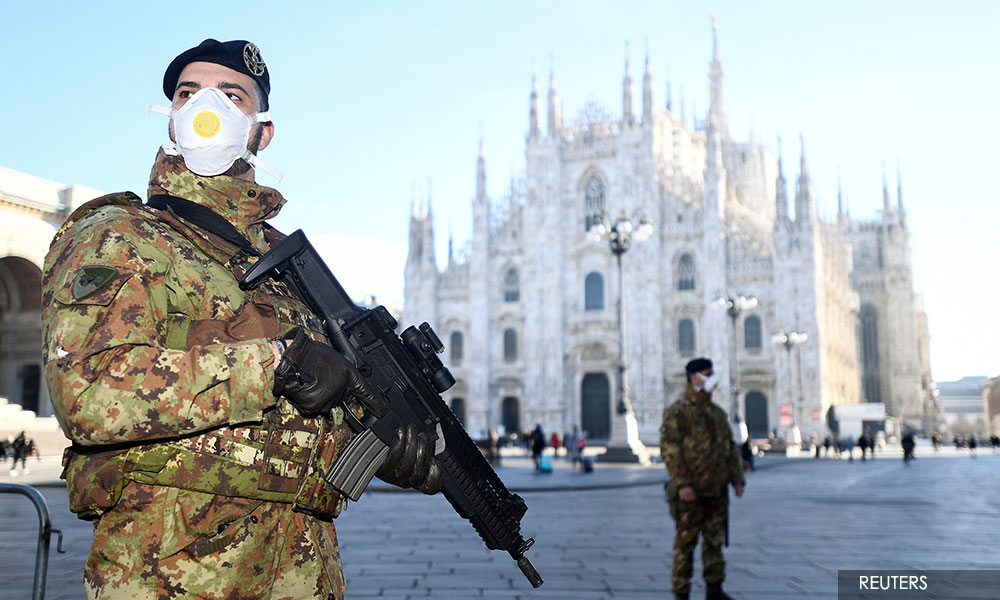
Let's dust off the history shelves and look at 1918 - the year the world was ravaged by a flu pandemic that killed more than 50 million people. Called the Spanish flu, the disease appeared at a time when the world was wrecked by war.
The First World War, fought with such ferocity and clangour, claimed more than 20 million lives. The Spanish flu, an invisible and more formidable foe, moved silently and insidiously to chalk up a higher toll.
This deadliest pandemic of the 20th Century - a pestilent, spectral virus (believed to be a mutated variant of the bird flu) - emerged so suddenly that the world was caught unawares.
Like the Spanish flu, the 21st Century nasty coronavirus - Covid-19 - also moved quietly and swiftly across the world with devastating results. More than 11,500 have died and still counting.
When the Spanish flu first claimed some lives, it was downplayed, with reports stating that it was just an old fashioned flu. Nothing to worry about. Go to bed and sleep. It would come and go. It was an age-old practice to calm frayed nerves. Not much information was relayed to the anxious public.
Even the warring nations saw fit to censor reports about the disease that was already snatching away the lives of young soldiers on the battlefields. The rationale was that they did not want the enemies, especially the Germans, to know that many of their men were dying from this viral attack, as this would undermine the war effort.
But this attempt at censorship failed because when the flu struck Spain, which had remained neutral in the war, the Spanish papers went to town with it, highlighting this strange, unknown illness. Soon it was dubbed the "Spanish flu", although its exact origin was a matter of dispute.
Some believed it came from the United States; others even pointed the fingers at China; and some others swore it emerged from the filthy, swampy trenches of France.

Fast forward to 2020 and the same 100-year-old behaviour cropped up in China. The Covid-19 made its first appearance in the city of Wuhan, but the initial official response was to downplay it. The authorities even reprimanded the Chinese doctor who first highlighted the matter. China went into a denial mode for a long time until the rapid spread of the disease dented its defence shield.
Many countries, too, were complacent, indifferent and slow to react to the emerging danger. When they did batten down the hatches in crisis mode, it was too late to stop the viral invasion. Like in 1918, the coronavirus spread like wildfire, crossing borders unhindered and bringing death in its wake. Fear "rode on the shoulders of the world".
The world in 1918 was totally unprepared to fight the Spanish flu, which swept people away in three tidal waves. The healthcare systems in most countries broke down as bodies kept piling up. It was estimated that the death toll in the US alone exceeded 675,000 - more than the combined fatalities suffered in the two world wars.
Today, the world is again overwhelmed with another virulent virus. The Covid-19 is a replay of the Spanish flu, as the mortality rate climbs exponentially with each passing day.
In many countries like Italy, which has surpassed China in the number of coronavirus deaths, the healthcare systems are near breaking point or have collapsed.
But unlike in 1918, the flow of information is fast in this interconnected world. There is a coordinated response in the form of lockdowns and restriction of movements. Yet, it will be an uphill battle to contain and defeat the most feared enemy the world is facing today.
As countries grapple with this life-and-death struggle, the 1918 horror must serve as a useful lesson and grim reminder that the truth must be told - and not covered up - as it is and that no nation is immune to diseases in any form.
Covid-19 is a common enemy and all nations must join forces in a world alliance to wage an unrelenting, total war on this unseen pestilence on the land, in the air, on the high seas - wherever it lurks.
PHLIP RODRIGUES is a retired journalist. - Mkini



No comments:
Post a Comment
Note: Only a member of this blog may post a comment.